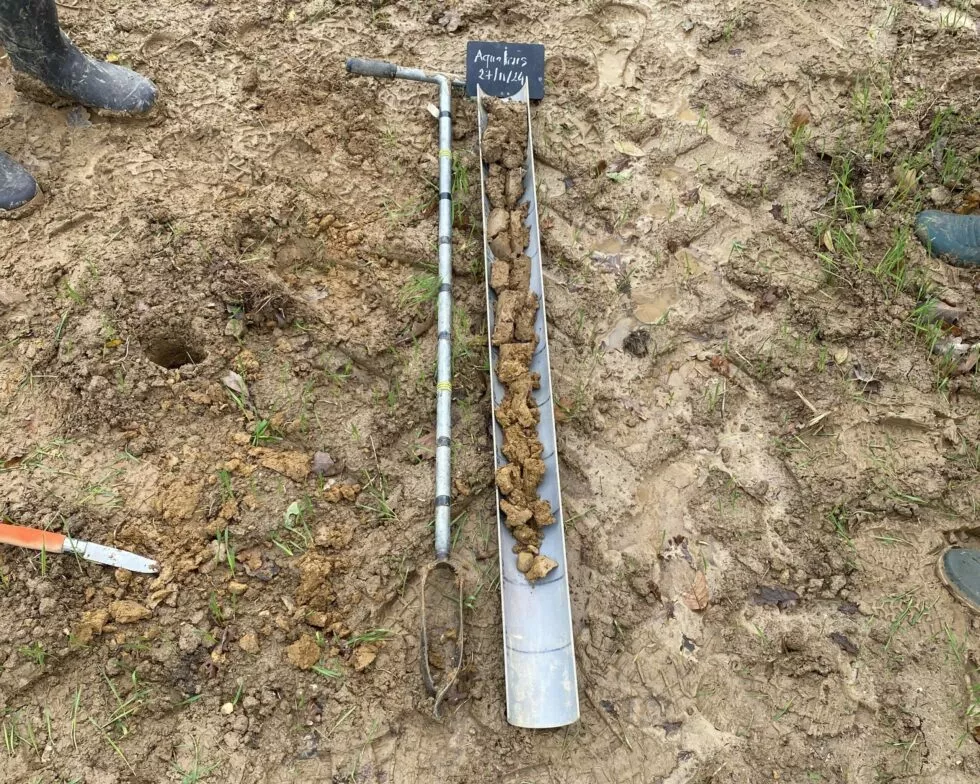The course of a soil study for sanitation: stages and duration

Understanding soil studies for sanitation
The soil study for sanitation is an important phase in the installation of autonomous sanitation systems for the treatment of wastewater. This analysis guarantees the durability and efficiency of the installation. In this article, we will explore in detail each stage of a soil study for sanitation, from the first contact to the final report.
Autonomous sanitation systems depend heavily on the nature of the soil on which they are installed. Unsuitable soil can lead to problems such as leaks, unpleasant odours and even environmental contamination. This is why a soil study for sanitation is not only a legal requirement in many regions, but also a step towards guaranteeing the performance and safety of the installation.
Stage 1: Contact and preparation
The first stage consists of contacting a specialised design office such as Aquatiris. This phase includes the collection of preliminary information about your land, such as its location, size and intended use. The sanitation specialist will guide you in preparing the documents necessary for the rest of the study. This stage, although quick, is essential for laying the foundations for a successful study.
During this phase, it is important to clearly define your needs and objectives. Good communication with the specialist can prevent future misunderstandings and ensure that the study is geared towards the most relevant results for your project.
Stage 2: Field analysis and surveys
The field analysis is a practical stage in which technical experts visit the site to carry out surveys. These surveys are used to assess the composition of the soil, its permeability and its absorption capacity. Using specialised tools, the experts take soil samples at different depths for analysis.
The surveys are carried out at different points on the site to obtain an overall picture of the soil characteristics. This approach makes it possible to identify potential variations in soil composition that could affect the design of the sanitation system. Technicians generally use equipment such as augers or penetrometers to carry out these surveys, thus guaranteeing an accurate analysis.
Finalisation of the soil study and final report
Once the results of the soil analyses are available, the surveyor compiles all the data to draw up a final report. This detailed document includes recommendations on the type of sanitation system to be installed, as well as advice on how to optimise the durability and efficiency of the installation. The report is an indispensable tool to ensure compliance with local standards and guarantee the sustainability of your sanitation project.
Drafting of the final report
The final report is a comprehensive document that summarises all aspects of the soil survey. It includes the results of the field analyses as well as detailed recommendations for the most appropriate type of sanitation system. The drafting of this report requires technical expertise to correctly interpret the data.
The report also provides forecasts on the expected performance of the proposed sanitation system, taking into account the specific conditions of the site. This forecast helps to anticipate future maintenance needs and to plan the interventions necessary to keep the system in good working order.
Validation and personalised advice
Once the report has been finalised, it is submitted for approval, often in collaboration with the local authorities. This approval ensures that the project complies with all applicable regulations. At the same time, the expert can offer personalised advice to optimise the installation and answer any questions you may have.
Personalised advice can include recommendations on the choice of materials, construction techniques and specific installation procedures. This advice aims to maximise the efficiency of the system while minimising long-term operating and maintenance costs.
Aquatiris: comprehensive support for your soil study
At Aquatiris, we take care of all stages of the soil study for the sanitation. Our qualified experts carry out the field analysis and surveys, and we support you in interpreting the results to provide you with recommendations tailored to your needs. We also draft the final report which is essential for regulatory validation and the success of your sanitation project. In addition, we offer personalised advice on the choice of materials and the design of the installations to guarantee their efficiency and durability. With Aquatiris, you benefit from comprehensive expertise and customised support throughout the process.
Conclusion
In conclusion, conducting a soil study for the sanitation is a methodical and essential process to ensure the success and sustainability of your project. By planning carefully and collaborating with qualified professionals, you can ensure that your sanitation system will be both efficient and compliant with environmental standards.

